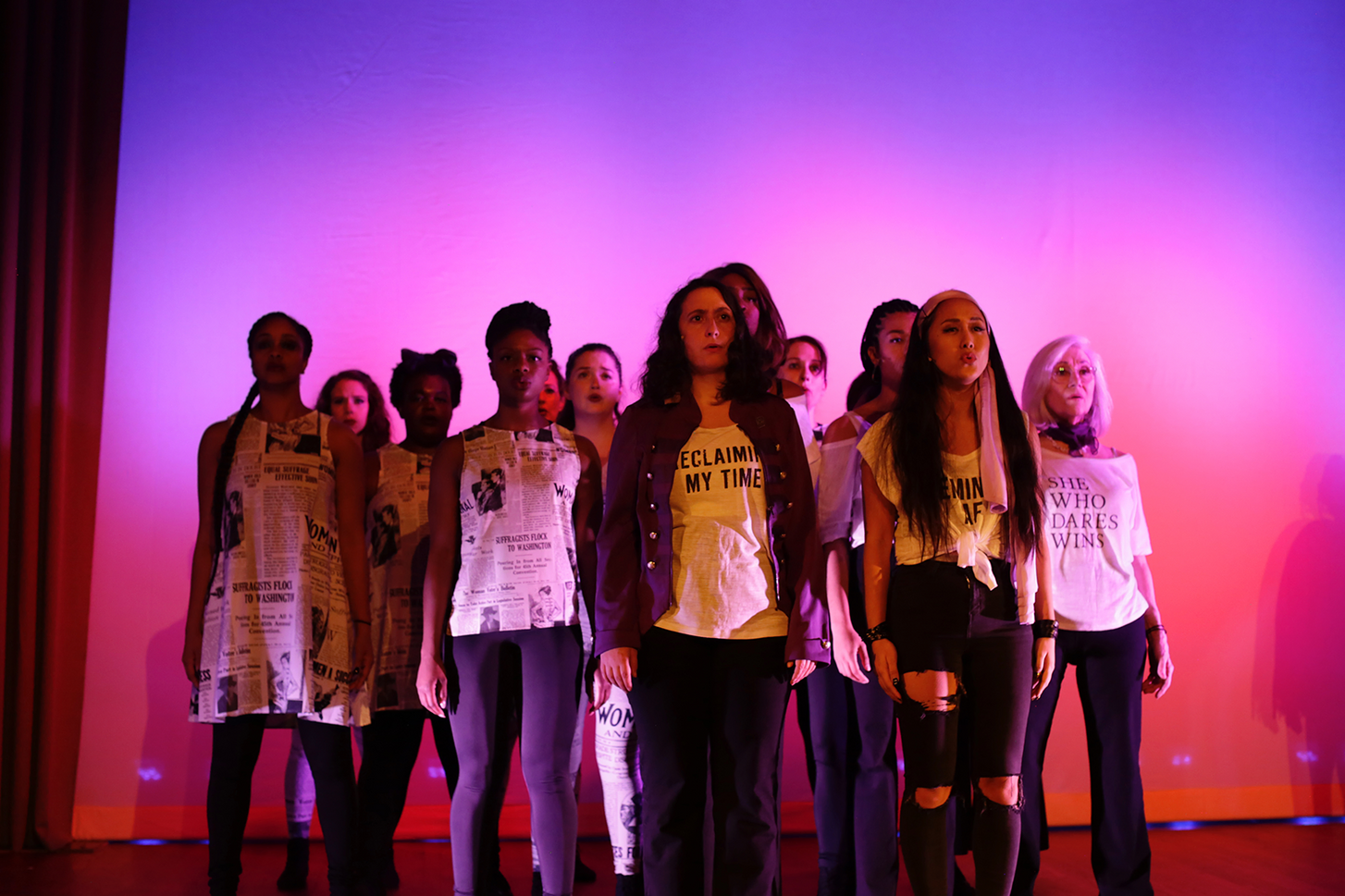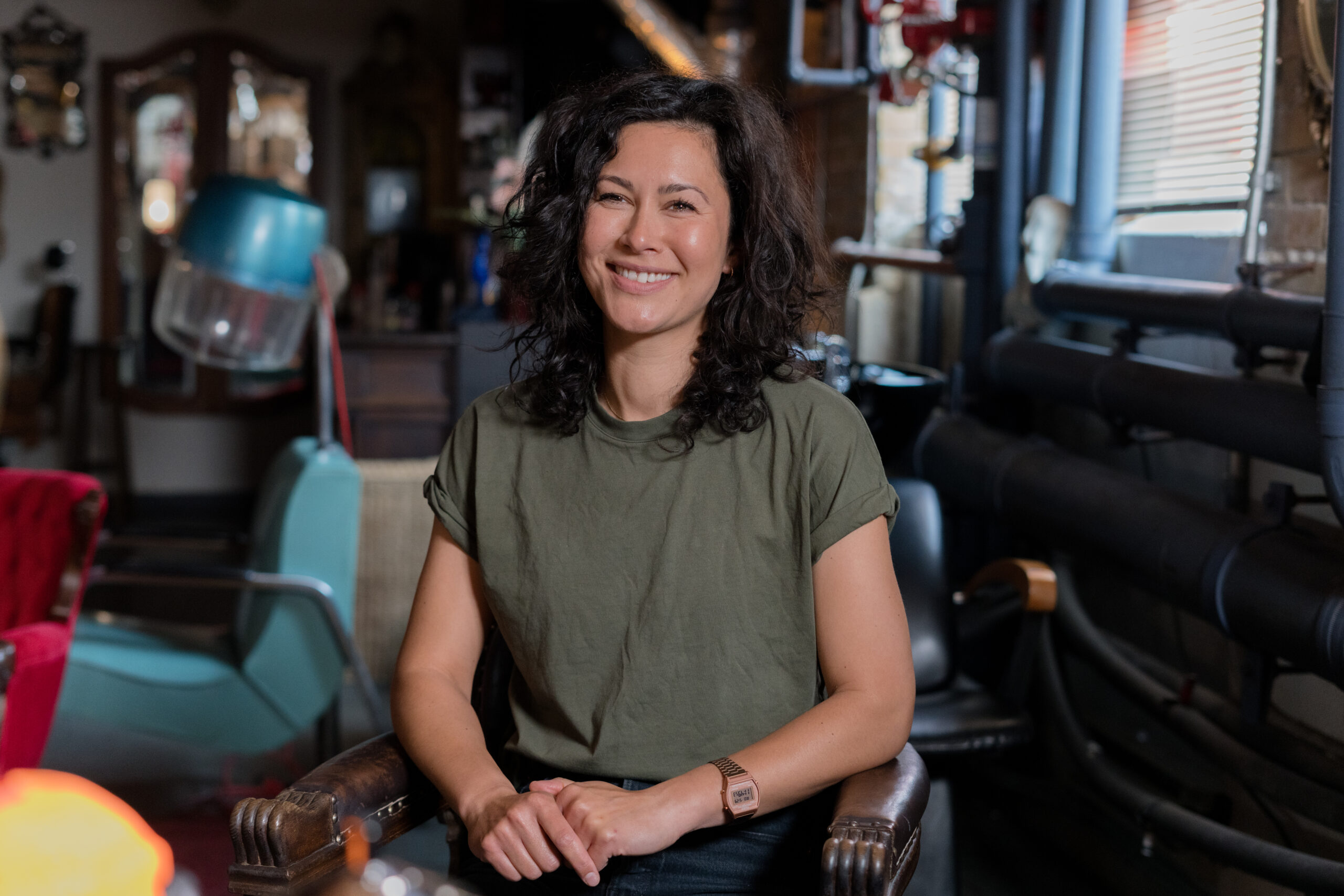
March is Women’s History Month and one of the ways we love to celebrate is to amplify the work and stories of women, especially women of color and underrepresented voices that mainstream media often excludes.
If you are looking for a great place to get your fill of women’s stories this month, we highly check out streaming platform OVID.tv, an innovative subscription video-on-demand service available in the US and Canada. During February they announced a slew of new films available to view, most notably documentaries and narrative features created be female filmmakers, featuring the stories of women and girls.
One of those is award-winning filmmaker Kimberlee Bassford whose films ‘Patsy Mink: Ahead of the Majority‘, and ‘Winning Girl‘, following the journey of Teshya Alo, a part-Polynesian, teenage judo and wrestling phenomenon from Hawaii, are available to view now.
Given the increasing focus on the number of women of color stepping into historic political roles, most notably and recently Kamala Harris as Vice President, the story of pioneer Congresswoman Patsy Mink is both a timely reminder of how far we have come, but how many barriers many women of color still face today.

In 1965, Patsy Takemoto Mink became the first woman of color in the United States Congress. Seven years later, she ran for the US presidency and was the driving force behind Title IX, the landmark legislation that transformed women’s opportunities in higher education and athletics.
Mink was an Asian American woman who fought racism and sexism while redefining US politics. Her tumultuous, often lonely political journey reveals what can be at stake for female politicians that defy expectations, push limits and adhere to their principles. Mink encountered sexism within her own party, whose leaders disliked her independent style and openly maneuvered against her. And her liberal views, particularly her vocal opposition to the Vietnam War, engendered intense criticism.
WINNING GIRL tells the dynamic story of an elite athlete on her ascent, a girl facing the challenges of puberty and growing up with an entire family dedicated to a single dream. Her story underscores the importance of what Patsy fought for in Title IX legislation.
We spoke with Kimberlee about her films, why she focuses on stories of underrepresented women of color, and the films she is currently working on.

Congrats on the news of two of your films being released on OVID.tv in February! As we head into Women’s History Month, both “Patsy Mink: Ahead of the Majority” and “Winning Girl” are must-see films. How are you feeling about the SVOD release?
Thank you! I’m really excited to have the films on OVID.tv, especially since many people are exclusively getting their content via streaming.
Let’s talk about the story of Patsy Mink and how iconic she is! Why was it important for you to make this film?
I grew up in Hawai‘i and knew of Patsy Mink as one of our longtime politicians. But sadly, it wasn’t until she passed away in 2002 and I began reading the news stories about her life that I really became aware of her story.
I was struck by what a trailblazer she was, not just as the first Asian American woman but the first woman of color in Congress. And I was surprised to learn that she had run for president in 1972 and was the co-author of Title IX, something that I directly benefitted from and that really opened up educational, career and athletic opportunities for women.
Unfortunately, I feel so many times the contributions of women, especially women of color, get lost in history, which only feeds into this notion that women are supporting players and not change-makers in their own right. My work is all about rewriting that narrative by spotlighting girls and women who are defying the status quo, righting wrongs and moving society forward.
Patsy was a trailblazer who dealt with many barriers along the way. Considering we are still seeing so many women of color in politics deal with racism and sexism, how can her life story inspire women today?
I think we all stand on the shoulders of those who’ve come before us. And while we as a society still have a long way to go toward gender and racial equality, I think we can draw inspiration from those like Patsy who fought to move the needle to where it is today. Change is often incremental. We need to keep pushing forward bit by bit. Patsy did that throughout her life.
What was it about her journey that inspired you personally?
As an Asian American woman from Hawai‘i, I was inspired to see that someone who looked like me and came from these islands had such a monumental impact on America. I was also struck by Patsy’s unapologetic liberalism. She believed government had a duty to help people. At the time, I was finding my political voice, and I found her politics and the way she carried herself as an elected official refreshing.

As a barrier-breaking Asian-American woman who wrote her own rules, in a country that has a complicated history with various Asian groups, why is this narrative in particular still relevant to today?
As a society, I think we’re finally starting to realize the ways that gender and race in overt and subtle ways impact the kinds of opportunities we’re given as individuals. The idea of intersectionality, however, is still new for many people. Women and Asian Americans are both groups that have been disempowered. When you have an Asian American woman, the effect is doubly so. You can see that play out in Patsy’s life. In her early years, the discrimination she experienced was mainly as a Japanese American. Later, she was prevented from doing the things she wanted to do because she was a woman. When she got to Congress in 1964, she was exoticized as an Asian American woman from Hawai‘i.
I think it’s important to note that Asian Americans are still discriminated against today. During this COVID-19 pandemic, we’ve seen an increase in hostility and violence toward Asian Americans because people wrongly associate them with the virus, which taps into a long history of Asian Americans being treated as foreign and dangerous. I think Patsy’s story is a great reminder of how integral Asian Americans have been to this country.
The second film available on OVID is about a young Polynesian judo and wrestling phenomenon from Hawaii. How did you first come across Teshya’s story, and then decide to make a film about her?
It was in 2009, a year after I finished the Patsy Mink documentary, that I came across two articles in the local papers about Teshya. She was 11 at the time and had just won a national wrestling tournament in which she competed against and beat boys. The stories also mentioned that she wanted to eventually win Olympic gold in both wrestling and judo.
I was struck by this young girl who was competing in two very male-dominated sports. I wanted to know more about what that experience was like for her. I also admired her ambition. So I reached out to one of her coaches who invited me to a practice. At that very first meeting, Teshya ran up to me, flexed her arm and said, “Do you want to feel my muscle?” I was hooked.
Tell me about documenting the family dynamics and how that plays such a big part of Teshya’s story and rise to success:
From the start, I realized that Teshya’s family played an active role in her sports. Wrestling and judo were family affairs. Teshya and her two siblings all trained and competed together. Both parents were at their practices and tournaments, which sometimes lasted all day. When the kids had to travel to tournaments, the whole family went. There really was no way to tell Teshya’s story without highlighting her family’s involvement.
Patsy Mink was a pioneer in the fight for Title IX, and Teshya Alo is an example of why this ruling has opened so many doors for young female athletes especially. Would you say gender equality is a consistent theme in your work?
Yes! But it wasn’t intentional. I didn’t start out my career thinking that I’d focus on stories about girls and women and issues of gender equality. But that’s what I’ve been drawn to. It was really only after completing WINNING GIRL and looking back on my work that I noticed the theme.
And actually the theme started with my first film, CHEERLEADER, which was my Master’s thesis film in graduate school. It was a short documentary that followed a squad of spunky 8- to 11-year-old cheerleaders through its season. I myself had been a cheerleader in high school and felt ambivalent about the sport. I loved the camaraderie and athleticism, but I questioned the fact that we were an all-girl squad cheering for the boys from the sidelines, that we wore makeup and short skirts and that our cheers and dances were overtly cutesy or sexy.
It was interesting when digging into the history of cheerleading for the film to discover that cheerleading began as an all-male phenomenon. It was highly respected. Cheerleaders were seen as leaders on campus. It was really only once women became involved that cheerleading became devalued, feminized and sexualized.

Why is it important for you to showcase the stories of women of color in film?
I’m a woman of color, and I very much identify as that. My race, ethnicity and gender have all shaped who I am. But it’s disheartening to know that girls and women, especially girls and women of color, are underrepresented in film and in media overall. Even more so, I get frustrated that this underrepresentation is so invisible to us as a society. I myself didn’t notice it growing up. Most of us don’t. Yet media has such a profound influence on how we see the world and what possibilities we dream for ourselves.
For instance, I have a son and daughter. When they were young, I realized that the children’s books I read aloud to them were dominated by male characters. Same for children’s television shows. You might say, well there are a lot of books and shows starring girls. Yes, there are, but they are still in the minority. You also have to look at the total number of characters and the quality of those characters. When it’s book or show with a male protagonist, most of the other characters are male too, except for one or two token girls. When it’s a book or show with a female protagonist, many of the supporting characters are male. So overall, we’re still getting more male representation.
My films are my way of changing the narrative, of moving the needle closer to a world with equal and diverse representation on screen.

What are you working on next that we can look forward to?
Like many filmmakers, I’m working on several projects at once. And continuing my trend, they all center around women’s stories.
The two I can share about publicly both happen to be feature documentaries about extraordinary women of color writers whose works have pushed society forward in meaningful and impactful ways yet who have struggled in their own lives.
The first is about acclaimed Samoan writer Sia Figiel, whose female-centric books changed the face of Pacific literature. The documentary, which is in production, is part artist portrait, part observational film as it follows Sia over five years as she tries to manage myriad pains in her life, among them food addiction and depression, and to ultimately heal from childhood trauma.
The second film, which is in development, is about the Chinese American best-selling author Iris Chang, who revealed to the world the Nanjing Massacre, one of the most horrific yet forgotten atrocities of World War II. Seven years after her groundbreaking work, she committed suicide at the age of 36.
You can keep tabs on both projects at my website (http://makingwavesfilms.com) or on Facebook (@makingwavesfilms).


















One thought on “Director Kimberlee Bassford On Featuring Women Of Color At The Center Of Her Award-Winning Films”
Comments are closed.